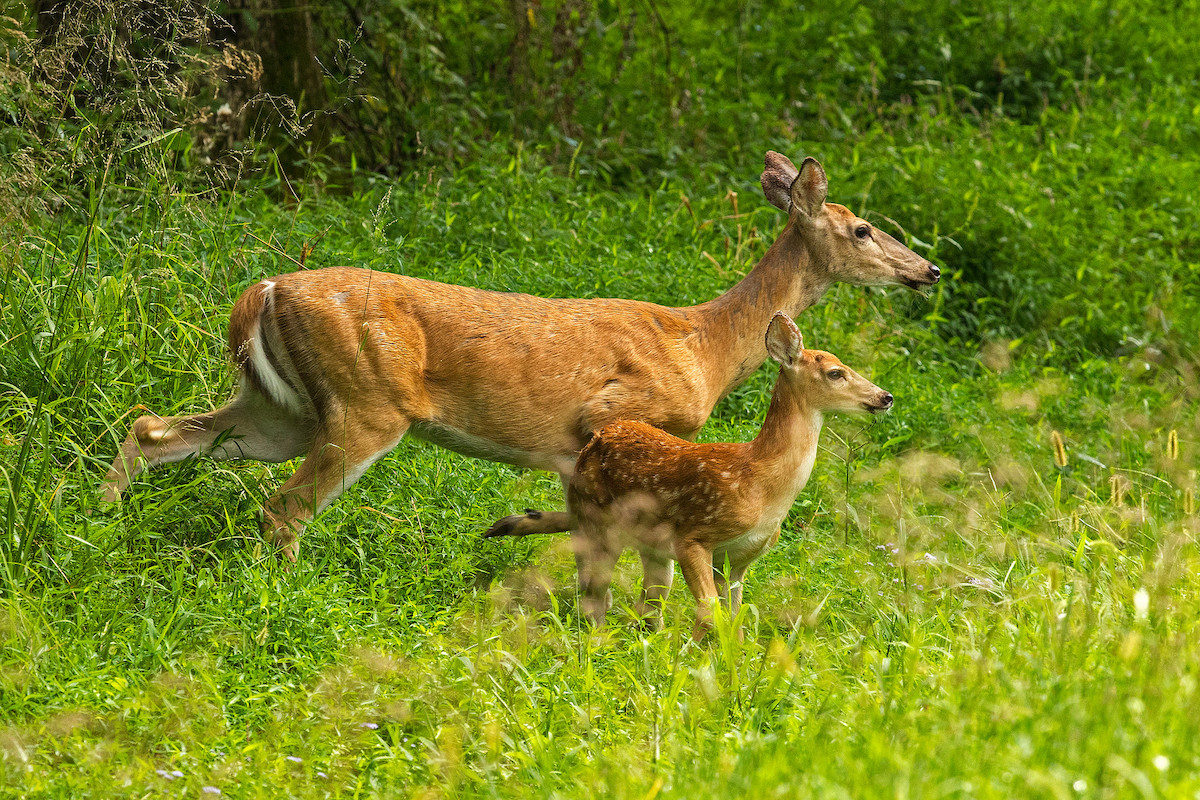
Photo by Michael R Jeffords.



Photo by Michael R Jeffords.
In the February 2022 edition of OutdoorIllinois Journal, Valerie Blaine did a wonderful job describing the North American Model of Wildlife Conservation and its origins. In this article, we explain how the Model is currently deployed by wildlife professionals in the Illinois Department of Natural Resources (IDNR). Learn here how the Model is used both as a rubric/decision-making tool and as a vehicle for communicating complex conservation issues.

Wildlife Resources are a Public Trust
Key to the Model is the concept that wildlife is owned by no one and is held in trust for the benefit of present and future generations. This is a revolutionary idea and a huge responsibility and challenge. Operating under the Model means that managers must hold themselves responsible for not only for the present but must also examine future ramifications. Often there are no “take-backs” with wildlife management decisions and public policy and wildlife managers tend to be very careful, analytical, and deliberate when it comes to developing and evaluating new actions, programs, or policies.
Markets for Game are Eliminated
The unregulated trafficking in wildlife was eliminated in the 20th century with passage of the federal Lacey Act (passed in 1900) that regulates the import of any species protected by international or domestic law. The Lacey Act also prevents the spread of invasive, or non-native, species. Today, the hunting and trapping of furbearing mammals and the fur trade is highly regulated, and an active market for fur exists.
Allocation of Wildlife is by Law
Wildlife is allocated to the public by law, as opposed to market principles, land ownership, or other status. Democratic processes and public input into law-making help ensure access is equitable. Illinois hunting and trapping regulations are found in statute, primarily in the Wildlife Code but also in the Administrative Rules that provide additional details. Changes or additions to statute requires passage by the General Assembly followed by signature by the Governor. Changes or additions to Administrative Rule requires two public review periods and the approval of the Joint Committee on Administrative Rules (JCAR), a bipartisan legislative oversight committee composed of 12 legislators appointed by the legislative leadership.

Wildlife Can Be Killed Only for a Legitimate Purpose
This pillar involves advocating fair chase and clean kills, and discourages wanton waste (see page 6 of the 2021-2022 Digest of Illinois Hunting and Trapping Regulations). This comes into play in the regulations on harvest methods, legal equipment and wanton waste. This also comes to bear in the setting the rules guiding the take of wildlife causing damage to property or threatening the health and safety of people and livestock.
Wildlife is Considered an International Resource
This principle recognizes that some wildlife migrate across borders, and one nation’s management, or lack thereof, has consequences to its neighbors. A prime example is the Migratory Bird Treaty Act, established in 1918 and intended to ensure the sustainability of populations of all protected migratory bird species.
The illegal trade of endangered species is a global issue. The U.S. cooperates with other nations through the Convention of International Trade in Endangered Species of Wild Fauna and Flora(CITES).
Closer to home, IDNR staff serve on the Mississippi Flyway Council and its technical committees. The Council is composed of 14 states, three Canadian provinces and the U.S. Fish and Wildlife Service. The Council’s work to facilitate management of migratory birds and their habitats is how our waterfowl populations and season frameworks are managed.
Science is the Proper Tool to Discharge Wildlife Policy
Science as a base for informed decision making in wildlife management has become standard in Canada and the U.S. Wildlife research sponsored by the IDNR with Federal Aid in Wildlife Restoration Act (Pittman-Robertson) funds helps guide our wildlife management decisions and recommendations. Ideas are shared with other professionals and practitioners in the various work groups and committees in the Midwest Association of Fish and Wildlife Agencies. IDNR staff also take advantage of wildlife research published in refereed journals.
Democracy of Hunting is Standard

The belief that all should have the opportunity to hunt sets the U.S. and Canada apart from many other nations. Elsewhere, the opportunity to hunt is restricted to those having special status, such as land ownership, wealth or other privileges. Aldo Leopold, considered the father of wildlife management, called this the “democracy of sport.” An example of this standard is how random drawings are used to distribute limited hunting opportunities. In the recent Spring Wild Turkey permit lotteries, hunters applied for an opportunity hunt their preferred county or state site, and season. Such drawings are also used by IDNR in the issuance of deer, waterfowl, dove and upland hunting opportunities. Random drawings all everyone an equal chance to be drawn.
Mike Wefer is the Division of Wildlife Resources Chief, Illinois Department of Natural Resources.
Submit a question for the author